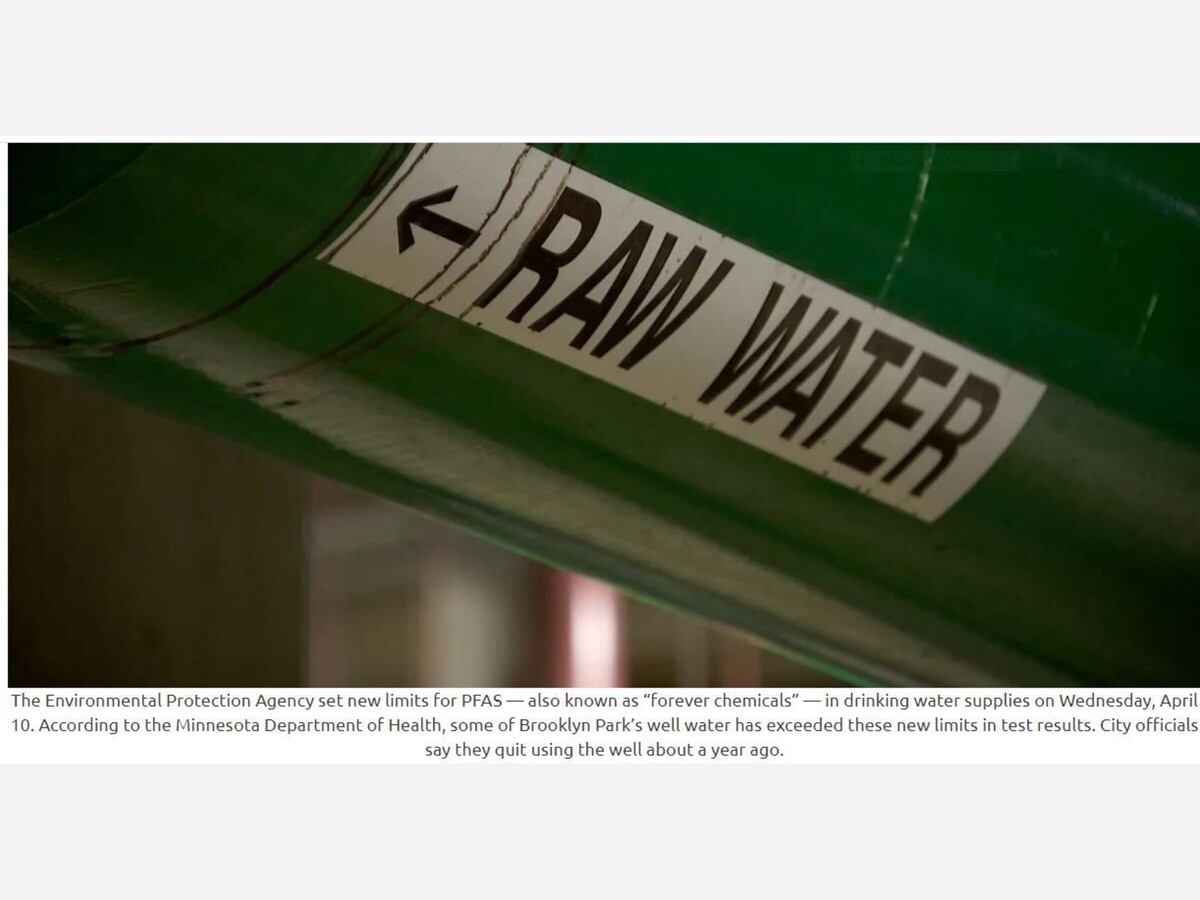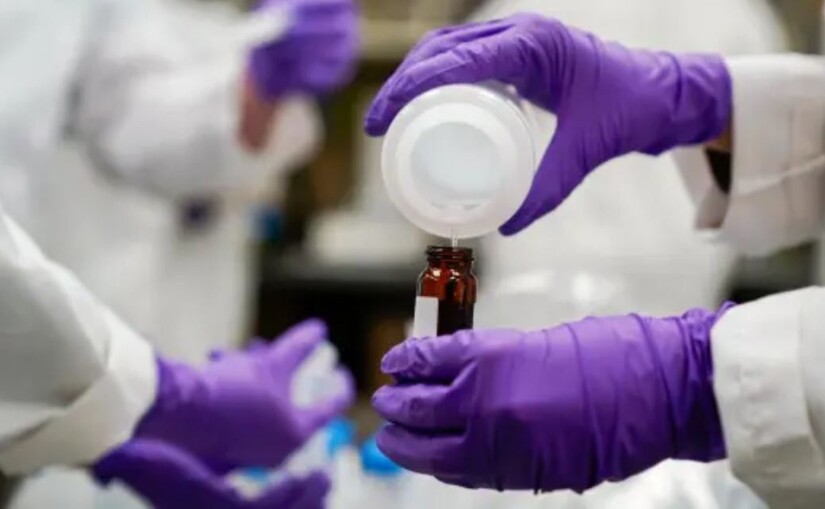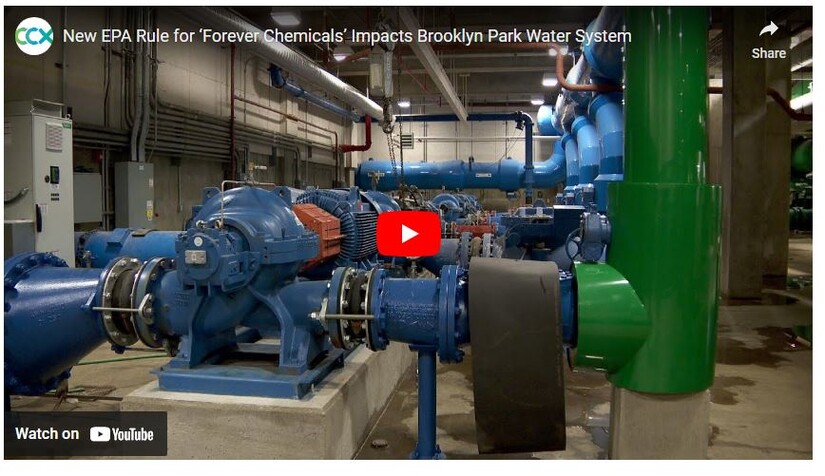Image


The Environmental Protection Agency. set new standards for PFAS — also known as “forever chemicals” — in drinking water supplies on Wednesday, April 10.
According to the Minnesota Department of Health, some of Brooklyn Park’s well water has exceeded these new limits in test results.
City officials say the test results came from one of the city’s 14 wells. The city quit using that well about a year ago and the remaining wells are within the EPA’s new standards.
According to Dan Ruiz, director of operations and maintenance for Brooklyn Park, the city’s water is safe.
“If there’s one message that I could send home to everybody today, the water in Brooklyn Park is safe to drink,” he said.

WHAT ARE PFAS?
PFAS are a group of man-made chemicals commonly found in fire resistant and waterproof products. These chemicals don’t break down in the environment, and have leeched into many public water supplies across the nation.
“So PFAS are perfluoroalkyl chemicals that are in so many household products, most of us don’t even know,” said Ruiz. “Common things like plastic containers, non-stick cookware, makeup, dental floss, carpet. PFAS is in a lot of things that are in our everyday lives.”
Long-term exposure to PFAS can cause health issues, such as cancer.
EPA Releases New Regulations
The EPA’s new regulations restrict water supplies from exceeding a mixture of four parts-per-trillion for six types of PFAS.
These regulations represent the EPA’s first efforts to legally enforce PFAS limits in drinking water.
Advocates at the Minnesota state capitol cheered the decision at an April 10 press conference.
“Through these new science based limits, our government has spoken loudly that toxic, synthetic chemicals do not belong in our water,” said Jay Eidsness, an attorney for the Minnesota Center for Environmental Advocacy.
BROOKLYN PARK’S WATER
According to Ruiz, Brooklyn Park has conducted several tests on its well water.
One of the city’s wells was found to exceed the EPA’s new limits.
“We haven’t used that well since last year, we only used it for a couple of days,” Ruiz said. “But once we got a glimpse of the new standards, we did not use that well anymore and we will continue to not use that well.”
The water leaving the city’s treatment plans has previously measured as containing PFAS at about two parts-per-trillion, according to Ruiz. That remains lower than the EPA’s new four parts-per-trillion maximum.
“[The EPA says] you need to do four tests and then you’ll have a little bit of a trend line — and so we’ve done three of the four tests,” Ruiz said.
New equipment could be installed to remove PFAS, but it’s an expensive prospect.
“If we look at treating all of the water that goes through out plant in Brooklyn Park, it could be upwards of $80 million,” Ruiz said.
However, the city could consider less expensive methods of PFAS reduction, such as treating specific wells.
Ruiz said he expects to address the issue of PFAS filtering with the city council once more test results are available.
The city would likely look at state and federal grants to help pay for PFAS treatment.
This comes as the council could also consider purchasing water softening equipment to treat the city’s notoriously hard water.
“Water softening is a big issue in Brooklyn Park,” Ruiz added. “Any system that we put in, of course, it’s extremely expensive. It would affect our water rates. Other cities, when they’ve added water softening, their water rates have doubled and tripled.”

SOURCE: CCX MEDIA